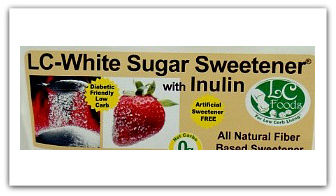The first WhatSugar–approved sweetener is HERE!
WHAT IS STEVIA?
THE 2025 SNAPSHOT
At WhatSugar, we’re dedicated to helping you navigate the complex world of sugar alternatives—and stevia is one of the trickiest to understand. As of 2025, it’s the most common sweetener in stores, with over 9,000 options available. To make things easier, I’ve created this page with 20 quick bullet points so you can absorb key details at a glance. Want a deeper dive? Check out my Stevia Buying Guide.
Stevia Basics
-
Sweeteners commonly referred to as stevia contain extracts of the leaf of a shrub called Stevia (Stevia rebaudiana Bertoni).
-
China is by far the main grower in the world, accounting for over 90% of stevia distributed worldwide.
-
Chemically speaking, the sweet components of the stevia leaf are steviol glycosides, which are 25 to 450x sweeter than table sugar.
-
The stevia leaf contains more than forty steviol glycosides and the most abundant are shown in the image below.

Pure Extract at a Glance
-
Highly refined stevia extracts sold in stores are different from the notably bitter whole-leaf or crude extracts, which are NOT allowed as sweeteners as stated by the FDA here.
-
When you buy stevia sweeteners, they will have one or more steviol glycosides. Stevia may be listed on product labels as stevia leaf extract, stevia extract, steviol glycoside, reb A, reb D, reb M, or stevioside.
-
The best-known leaf extract is reb A (short for rebaudioside A) or rebiana which is used in most products you find in stores. Pure reb A is 250 to 450 times sweeter than table sugar with a characteristic slightly bitter, licorice-like aftertaste.
-
Two sought-after extracts, called reb D and reb M, are promoted as being the 'better-tasting' and 'more sugar-like' stevia. We're launching our very own WhatSugar–approved in spring 2025.
-
With the exception of reb D and M, all other extracts have a distinct taste and work best when combined with stronger ingredients, such as coffee, chocolate, or citrus fruits.

How to Buy Stevia
-
Over 9000 stevia sweeteners are available to you in stores across the United States.
-
Stevia comes in a variety of forms: liquid, granulated, individual packets/sticks, and cubes/tablets.
-
Some products have pure stevia leaf extract — one ingredient only — which is super concentrated, meaning you need to use just a pinch.
-
The vast majority of stevia products are blends with bulk sweeteners such as erythritol and allulose. Others might have inulin, sugars, maltodextrin, or xylitol instead. I showcase these blends HERE.
From Pure Stevia to Blends
The Role of Bulking Sweeteners
-
When Pure Stevia Works Best: Pure stevia extract is perfect when all you need is sweetness. It works well in hot and cold drinks, smoothies, cocktails, yogurt, and sprinkled over oatmeal. It’s also great for on-the-go sweetening as just a tiny amount gives the sweet taste you need.
-
The Limitations of Pure Stevia: Pure stevia extract offers no bulk — it won’t thicken, bind ingredients, or add viscosity to food. It also doesn’t brown or caramelize, making it unsuitable as the sole sweetener in baking.
-
What's in the blends? In blends, 99% of the product’s weight typically comes from the bulk sweetener, with only a hint of stevia extract. This raises a common concern: Isn’t it misleading to call the product “stevia” when almost all of its weight comes from something else? Here's a detailed answer.
-
Why mix with bulking sweetener? While pure stevia extract can boost sweetness in recipes, it needs a bulk sweetener to create a sugar-like texture, especially in baking. Bulk sweeteners are carbohydrates. They are often less sweet than sugar and offer minimal calories to each serving. Here are 3 reasons they're used:
-
Bulk sweeteners give stevia an overall resemblance to table sugar. It fills the empty space (mass and volume) that pure extracts have for being so concentrated. They make stevia spoonable and pourable.
-
Bulk sweeteners improve stevia's mouthfeel (that sensation of thicker or "fuller" in the mouth)
-
Bulk sweeteners improve stevia's taste by masking off-flavors (any non-sweet taste) and the provide sweetness synergy (boost sweetness).
Learn more about bulk sweeteners HERE.
There is A LOT to see, 160 stevia products to be precise. Make your choice below:
WhatSugar is reader-supported.
When you buy through Amazon links, this site may earn an affiliate commission.
A one-woman business relying on Amazon affiliate commission to avoid ads.
The list above is not intended to endorse, advertise or recommend products.
We present this listing simply as a service to our readers.












































































































































































